The Best Time To Visit Iceland (Breakdown By Month)

Iceland is a year-round destination, and it’s tough to say the best time to visit. Summer in the island nation is undoubtedly the most popular, thanks to the wealth of activities and midnight. However, winter can also reward intrepid travelers with amazing winter sites and a chance to spot the dazzling Aurora Borealis.
I’ve been in June, July, September, and October and have found that every month is a fabulous time to visit with something unique. I will explain each month and what you can expect from all four seasons in Iceland so you can decide what time of year is best for travel.
Iceland Weather By Month
January
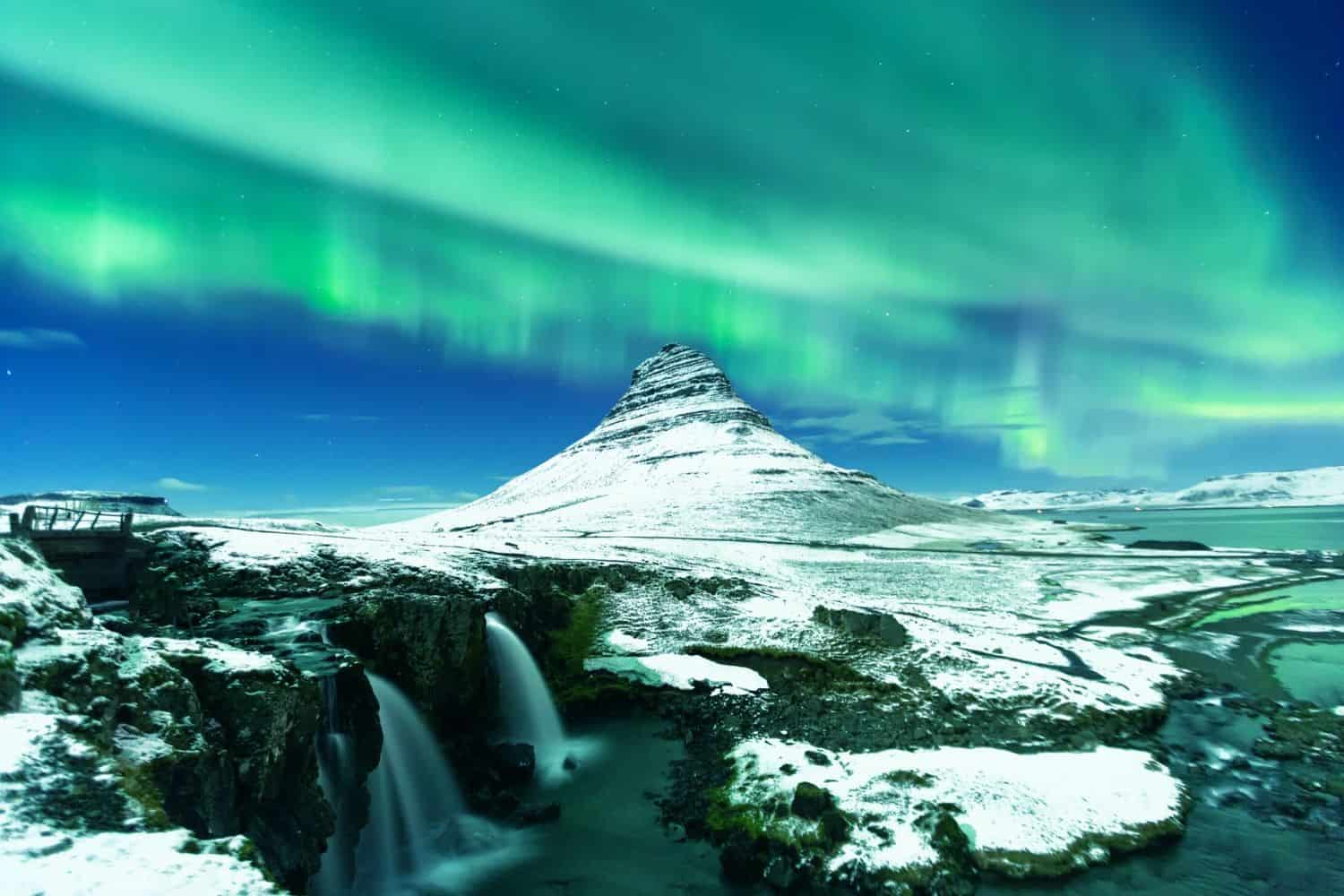
January is one of Iceland’s quietest months for travelers. It is great for those looking to get away from crowds of tourists. Days are short, and the cold can be brutal, which keeps many travelers away. However, most landscapes will be covered in beautiful snow. A true winter may call your name if you come from a milder climate.
With almost 19 hours of darkness, winter is an excellent time to see the Northern Lights if the cloud cover breaks. Although days are short, Reykjavik has plenty to explore, and winter tours offer a unique view of the wild landscapes. Visitors can go snowmobiling, venture into ice caves, or relish in the natural hot springs.
Prices for accommodation and tours will be lower as it is the off-season. I don’t think this is a bad time to go to Iceland. Just make sure you are prepared and pack well for the cold! Just make sure you pack some reliable winter clothes.
February
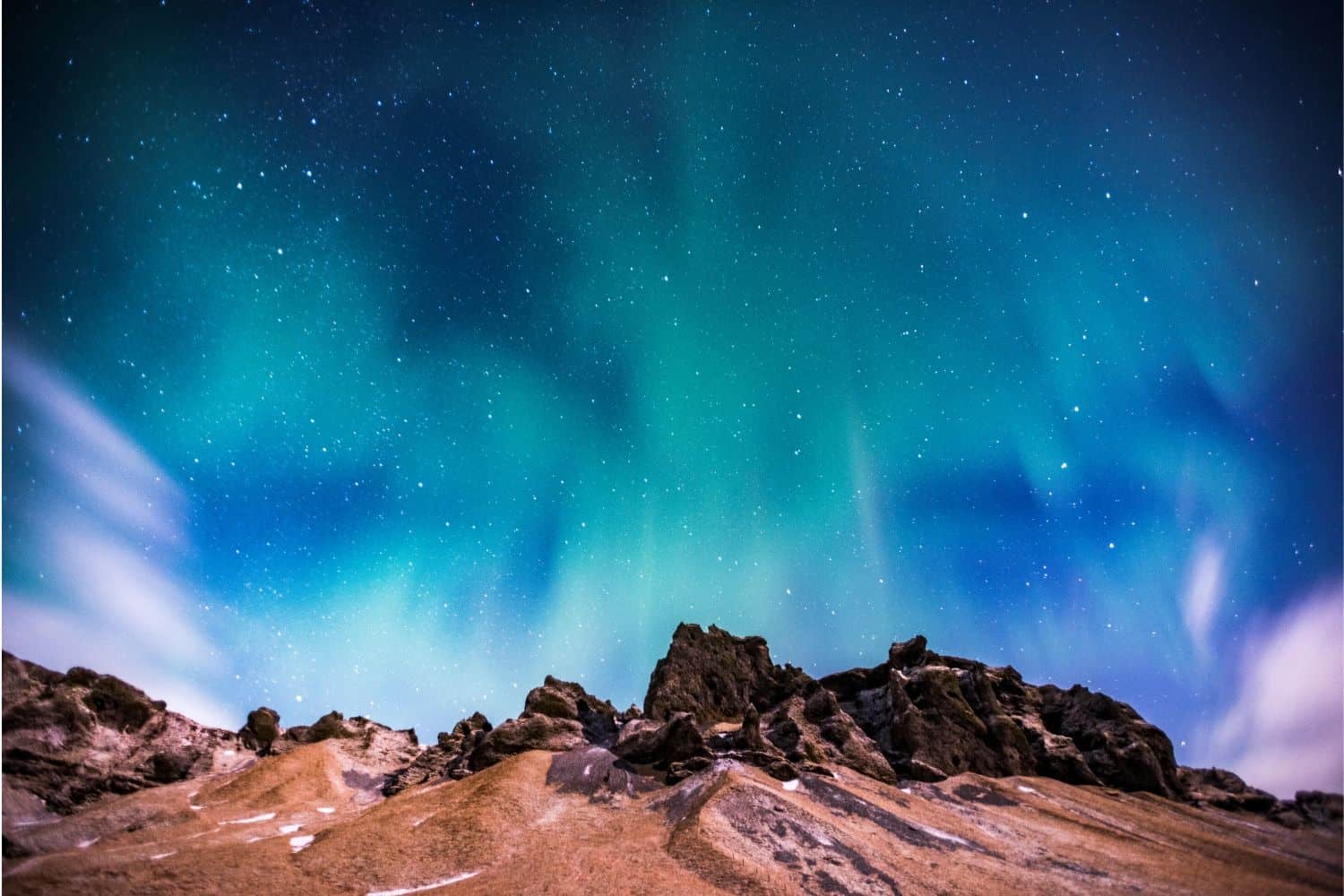
Iceland in February is similar to January, except your days will be filled with a bit more daylight. Expect unpredictable weather, plenty of snow, and a high probability of catching the Aurora Borealis, but that doesn’t mean it’s not one of the best times to visit Iceland – depending on what you are after!
The temperatures range between -3°C to 3°C, so a good, packable down jacket is smart. Reykjavik can be busy at this time of year as the capital city hosts several festivals, including the Stockfish Film Festival, Rainbow Reykjavik, the Winter Lights Festival, and the Reykjavik Bar Summit.
March
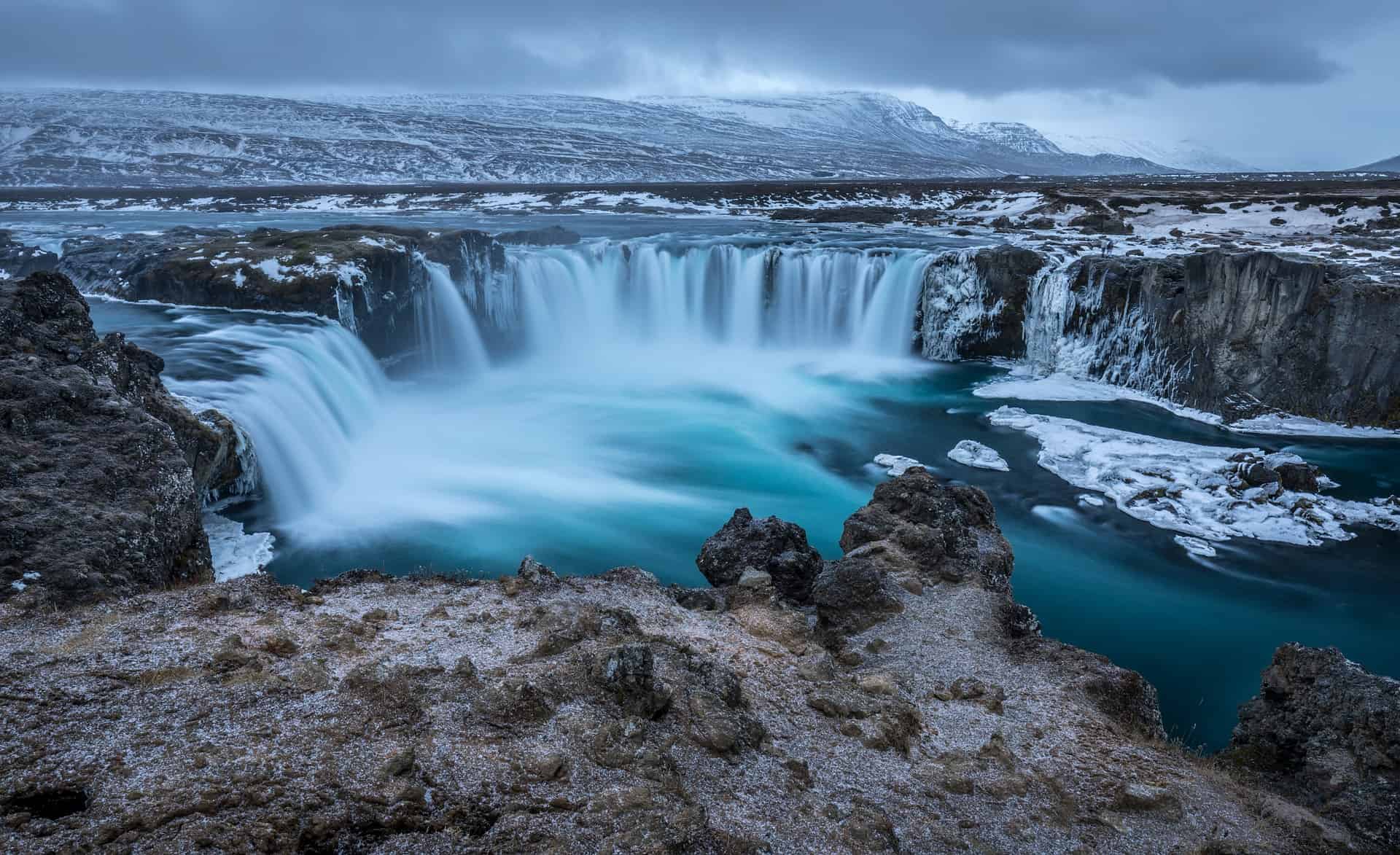
The winter fun is now winding down, and snow begins to melt in Reykjavik. It’s not a Christmas wonderland, and it’s not quite a summer bonanza. This is one of Iceland’s least visited months. Since the crowds are low and still cold, March is a quiet time to drive the Ring Road if you’re averse to crowds and on a budget. However, the month will still present some challenges when driving the famous road.
The days are getting longer in March, but it still gets dark at night, so your chance of seeing the Northern Lights is high! The vernal equinox falls toward the end of the month, bringing about some of the largest geomagnetic storms and creating vibrant Aurora Borealis displays. The chances of rain or snow are still high, and you shouldn’t expect warm weather. Iceland’s average daily temperature in March is between -3°C and 3°C. Pack warm clothes!
April
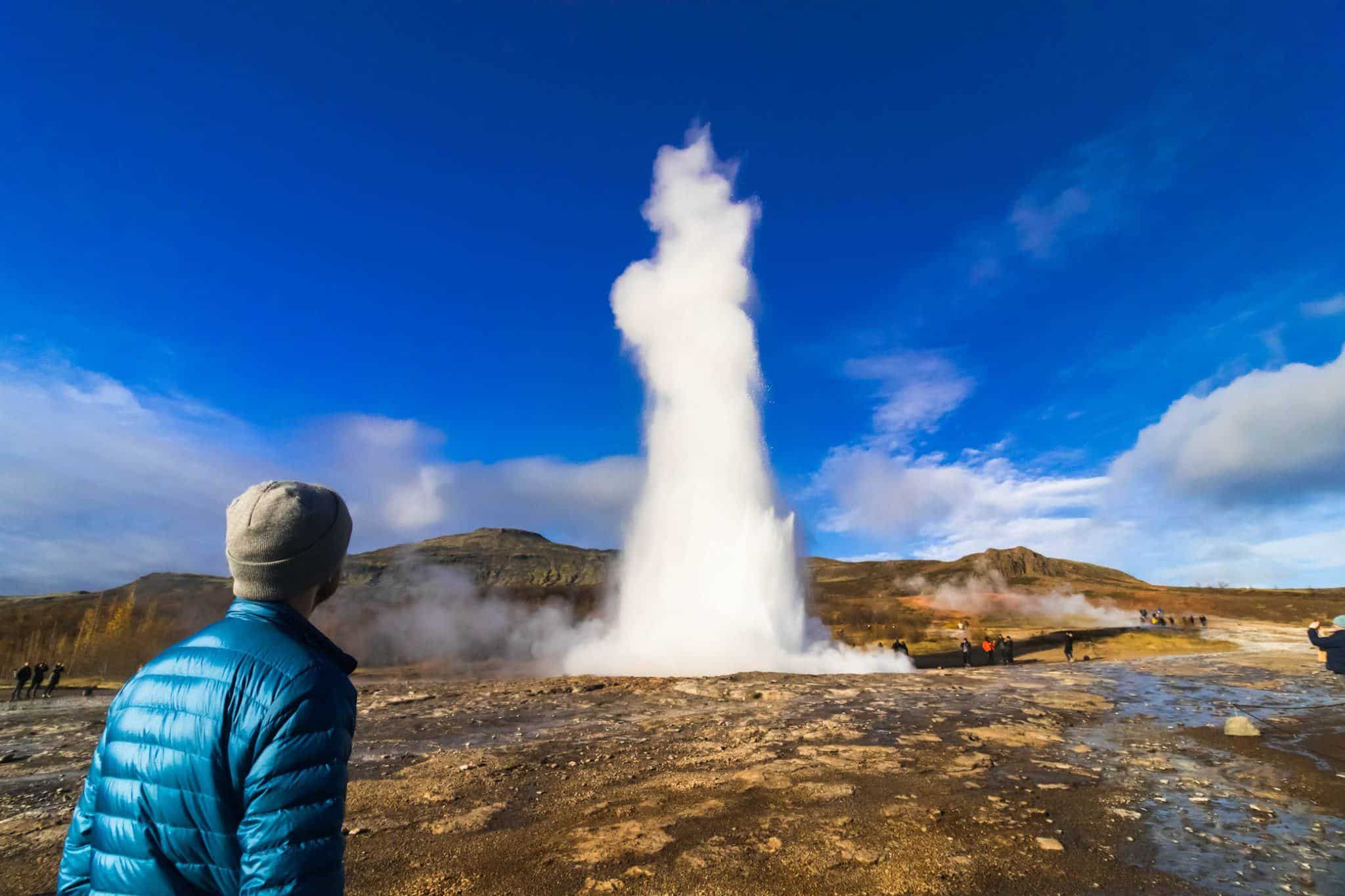
Days grow longer, and Icelanders can almost smell the sweet summer air. Although the sun and warm weather are almost here, there is still a month to go. This means that some summer activities aren’t available, and a few winter activities may have stopped. Going on a brisk hike in April is still possible, and it’s great for taking in some cool air. Another great thing is to head to southern Iceland around Skogafoss, Vik, and Jökulsárlón Glacier Lagoon.
Remember that as daylight creeps in, your chance of seeing the Northern Lights starts to drop, but it is still possible! April is the best time to visit Iceland for whale watching, as it is the beginning of whale season. There are plenty of whale-watching tours departing from Reykjavik. You stand a great chance to see the minke whale up close! I should mention April brings puffin season, too. April marks your opportunity to see those cute/funny-looking birds in Iceland!
May

May in Iceland is just about the peak summer season. Now is the time to come if you want a semi-reasonable deal on travel (sorry, guys, nothing in Iceland is cheap). The weather is temperamental, and there is more daylight than night, and you can get beautifully long sunsets.
The Icelanders are coming out of a long winter, so the atmosphere is joyous. The weather can still be unpredictable, though, and I recommend packing as if you are going to Iceland in the winter, just in case. It’s officially the shoulder season, and many of the country’s best attractions and tours are open to visitors.
Although you likely won’t see the Northern Lights, May in Iceland is when wildlife comes alive! The beautiful puffin bird returns to the shores of Iceland in April, so you can almost guarantee seeing them in May. Whale-watching tours run often and are also more pleasant under the sun. Last, you can go horseback riding without freezing in May!
June

Long sunny days, less rain, heavy winds that turn into light breezes—it’s summer in Iceland! Many locals consider June to be the best time of year. June in Iceland has the longest daylight hours. The Midnight Sun, or when the sun is still visible at midnight, will be a common occurrence now and can make for some stellar photos.
This is a natural phenomenon around the Arctic Circle, so visiting Iceland in June is extra special and enough reason to go. The country’s Northernmost parts see 24 hours of daylight. If staying up all night and partying with the Icelanders is your cup of tea, then summertime is when you want to be in Iceland.
Or, if partying isn’t your thing, the 24 hours of daylight will give you a huge advantage if you drive around Iceland and want to catch places in the middle of the night. More daylight means more time to do things like snorkeling in Silfra Fissure or chasing after the county’s abundant waterfalls! June is one of the best times to visit Iceland.
July
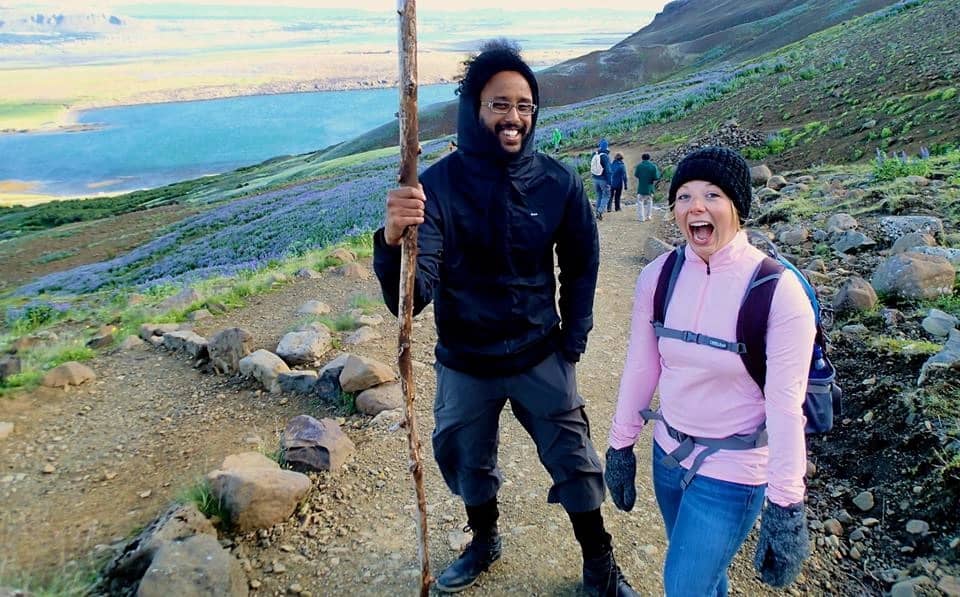
Both July and August are great times to do warm(er) weather activities. Hiking around the country is great this time of year. Of course, you can still do these activities in the colder months, but we can all agree it’s more enjoyable with sunshine. Although it may be warmer and you’re guaranteed some beautiful green landscapes, summer in Iceland comes with a few issues.
It’s peak season in Iceland, so expect prices to go through the roof. Also, like most places around the world, summertime is when most people take their vacations, especially Americans. And Americans LOVE Iceland, so you can expect to find many more people in the country. Also, it should be said that the weather is never guaranteed in Iceland; it still rains in July.
I visited Iceland in July on my first trip and had a fabulous time. I hiked during the day, biked around Reykjavik, partied until the sun “set” at 2 am, and joined my Icelandic friends at the public swimming pools. People are happy in the summertime, and you can’t beat Iceland’s vibe.
August

August is one of the best times to visit Iceland. It is the warmest time of the year to travel the Arctic Circle, and summer temperatures average around 15°C. Days are similar to most of the Northern Hemisphere, with the sun rising between 5 a.m. and 6 a.m. and setting between 9 and 10 a.m. So you still get long days with the ability to sleep in darkness!
August is a great time to explore Iceland. The land is green and lush, the sun shines, and some of the most popular tours run. The climate is ideal for hiking and camping. August is the last month you will definitely see puffins (although stragglers are hanging about in September).
September
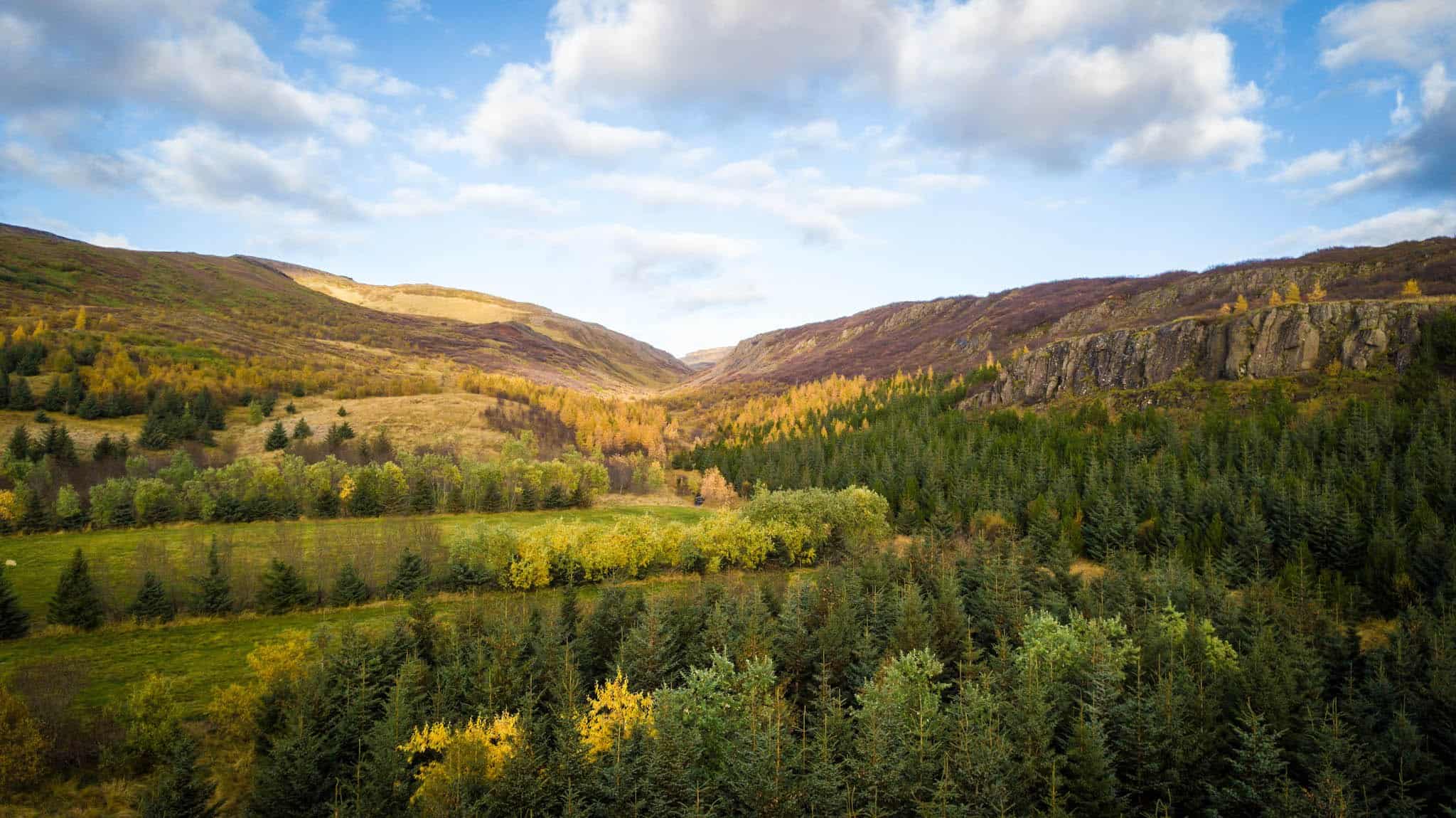
September is great everywhere in the world, and it’s no different for Iceland. It’s when the fall colors start to show off, and the temperatures are comfortable, making it the best time to visit Iceland. You may begin to get a little rain, but nothing that should hold you back from visiting Iceland.
Most tours run at least until the end of September, and we found that every single big campsite was still open for campers and camper vans until the 30th. Days begin to grow shorter in September, so you stand a chance to see the Northern Lights.
Snow is around the corner, but most roads should remain open. This lets visitors see amazing places like the West Fjords, Landmannalaugar, the Golden Circle, and Mount Hekla. If you’re a film geek, you will want to head to Reykjavik for the annual Reykjavik International Film Festival.
October
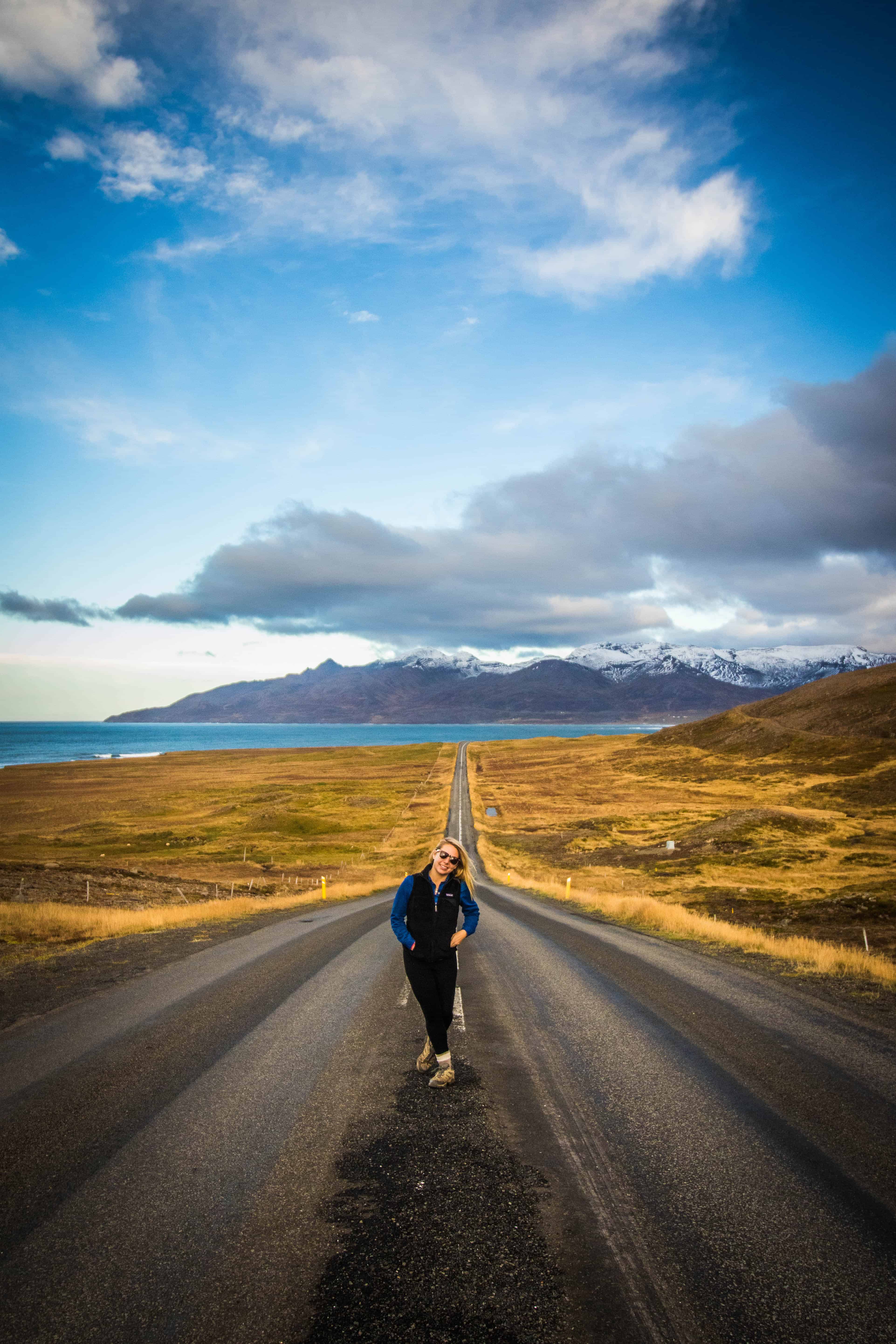
In my opinion, this is the best time to visit Iceland. It’s October, and who doesn’t love that time of year when the leaves turn bright yellow, orange, and red! Our first trip together for this blog was in October, and we had a tremendous trip. The weather was pleasant, with only a few days of rain and a bit of sunshine each day. While the days were cool, they didn’t feel too much different from our summer trips.
As the month begins the off-peak season, it means fewer tourists and better rates on hotels, car rentals, or campervans. However, the popular sites are still busy, and the country is never cheap! If you’re an independent traveler, it’s a great time to travel as you can still see Iceland’s natural sites. However, it’s not the best time for tours, as many popular summer tours close for the season but have yet to transition to the winter offerings.
The good news is that it’s prime time to spot the Northern Lights. The Autumnal Equinox brings about strong geomagnetic storms, and the dark skies make for incredible shows. We’ve seen the Aurora Borealis many times, and one of the best shows of our lives remains during this time in Iceland.
November

November is officially when you can say, “Winter is coming.” Expect cold weather, shorter days, and rain. Many roads will be shut down, but the Ring Road is still accessible. Just make sure that you are vigilant about the weather! The fall colors have mostly subsided, but snow is starting to fall, making the waterfalls, mountains, and volcanoes even more beautiful.
Some of the most popular things to do in Iceland in November are a glacier hike, ice caving, and the Nothern Lights. Like many places in Europe, tourism is dwindling. It’s a great time to visit popular attractions like Skogafoss, The Blue Lagoon, and Reynisfjara Beach. Generally, we would say November is the “worst time to visit,” granted that is very subjective.
December

This falls under “Iceland in winter,” but I didn’t want to start this whole post with December and confuse everyone! Christmas is huge in Iceland, so you will not miss out on the holiday cheer if you choose to vacation in Iceland in December.
The whole city of Reykjavik will be lit with Christmas lights, Santa Clauses will be scattered throughout the city, and the snow will be in full force. Oh yeah, and don’t forget about December 31st, when the city comes alive for the New Year celebrations. The European Christmas season is fabulous. This is a great time to go to Iceland!
December is also the darkest time of the year. Days only last a couple of hours, so you must make the most of your sunlight. However, long nights make it a good time to see the Northern Lights. Average temperatures range from -1°C to -5°C, so bring a jacket, gloves, scarf, boots, and a hat.
When is the Best Time to Visit Iceland?

Ultimately, you decide the best time to visit and what you would like as a traveler. Is it your honeymoon, or are you looking to take a break from the desk job? Would you like to see the leaves changing in the fall, or does hanging out in a t-shirt in Reykjavik suit your fashion? The best months to holiday in Iceland are June, July, September, October, or January.
When is the Best Season?

High season (July-September): Like most places in Europe during the summer, Iceland’s high season runs from July to mid-September. This is when you will find the best weather, but it’s also crazy crowded. Days are longer, and often, the sun doesn’t set until 2 a.m., and you really never get “nighttime.” The weather is also warmer, but you will still need a jacket. Hotel and car rental prices are at their highest during the high season.
Shoulder Season (May-June and September-November): We traveled to Iceland in October and loved it. The weather is cool, the leaves are changing, the crowds are few, and getting off the beaten path is easy. In general, the whole vibe in the air is wonderful. We’ve also found better deals on car rentals, campsites, and guesthouses. We saw sunny days but also had many overcast and gloomy days.
Low Season (Late November-April): Winter in Iceland is no joke. The weather is unpredictable and can be deadly. You likely won’t be hiking much, but you will probably see the Northern Lights. It’s quiet during winter and still just as beautiful as the summer!
Fun Festivals in Iceland to Attend
Dark Music Days Festival (Late January into early February)
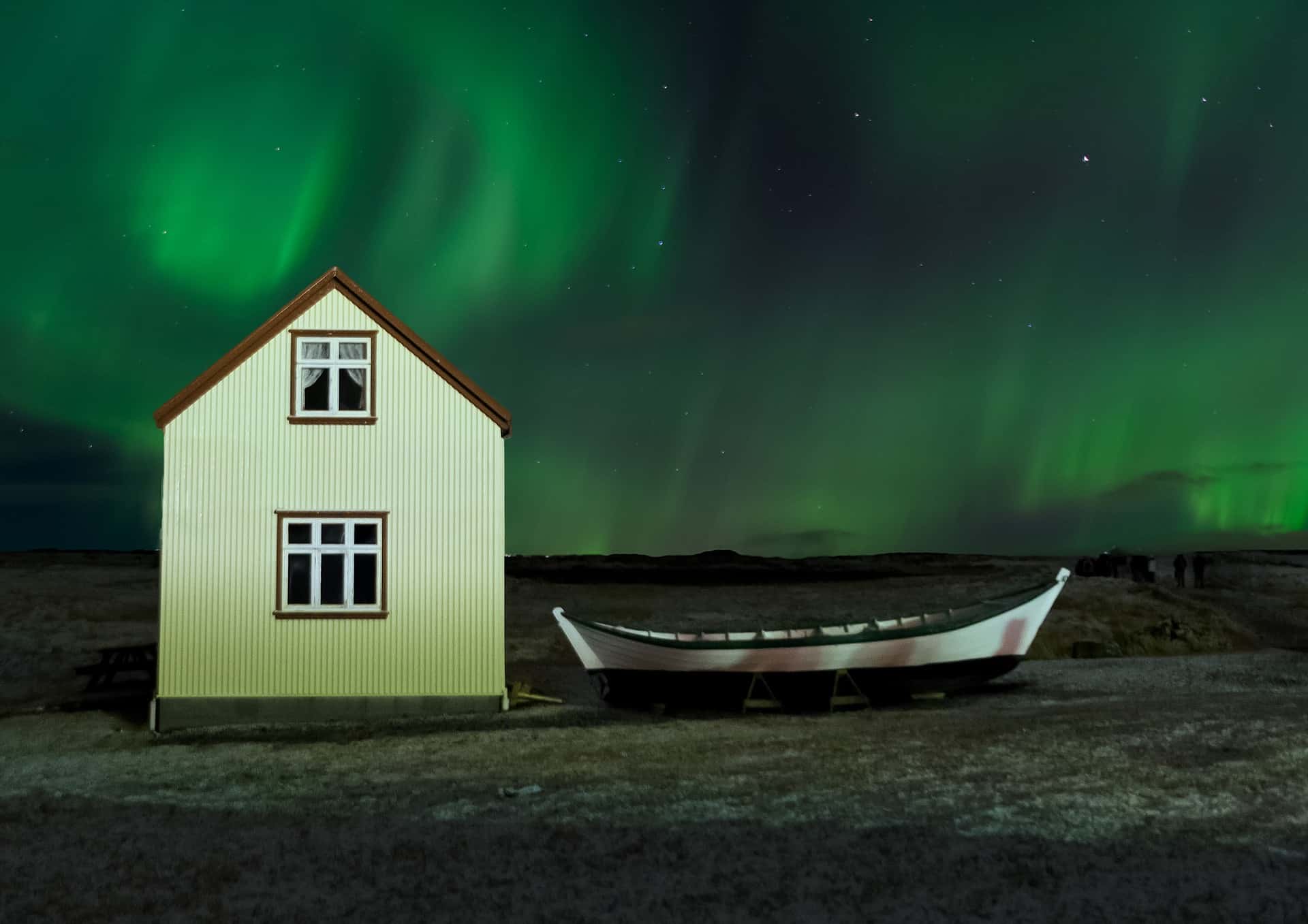
There are many festivals and events throughout the year. When the daytime becomes as dark as it is in Iceland, many of us need something to lift our spirits. The name of this Iceland festival says it all: The Dark Music Days Festival is a five-or-so-day festival spanning from the last few days of January into early February, taking place over the darkest days of the year in Iceland.
Winter Lights Festival (February 6 – 9)
The Dark Music Days Festival isn’t the only gathering that revolves around the daylight situation (or lack thereof) of Iceland’s winters. The Winter Lights Festival, taking place in the first week of February every year, was conceived to celebrate the gradually increasing daylight (and, therefore, longer-feeling days) that begins after many months of darkness. Among the features of this important festival are light installations, cultural performances, and outdoor activities (so dress warm because it’s still cold!).
Viking Festival (mid-June)
There are a ton of festivals in Iceland in June (including a Color Run, Sailor’s Day & Sea Festival, and a huge arts festival in Reykjavík), so it was hard to settle on just one. But we couldn’t pass up a chance to discuss the Viking Festival. This festival is pretty much what it sounds like a celebration of Viking culture that will take you back in time a thousand years.
Reykjavík International Film Festival (Late September)

You’ve heard of the US Academy Awards, no doubt – well, the Reykjavík International Film Festival is the Icelandic equivalent. One of the country’s largest and most culturally diverse events, it is an entirely volunteer-run event spanning 11 days. You can, of course, come to watch new releases in indie film, but there are also panel discussions, exhibitions, and even oddly-located film showings – like inside directors’ homes (how cool would that be?).
Best Time For Reliable Weather

You stand your best chance of good weather between late June and September. Temperatures range from 12°C to 20°C. Locals enjoy the sunny weather in Reykjavik, and it’s a great time to go hiking and see all the purple lupines that dot the landscape.
the best time for the Northern Lights
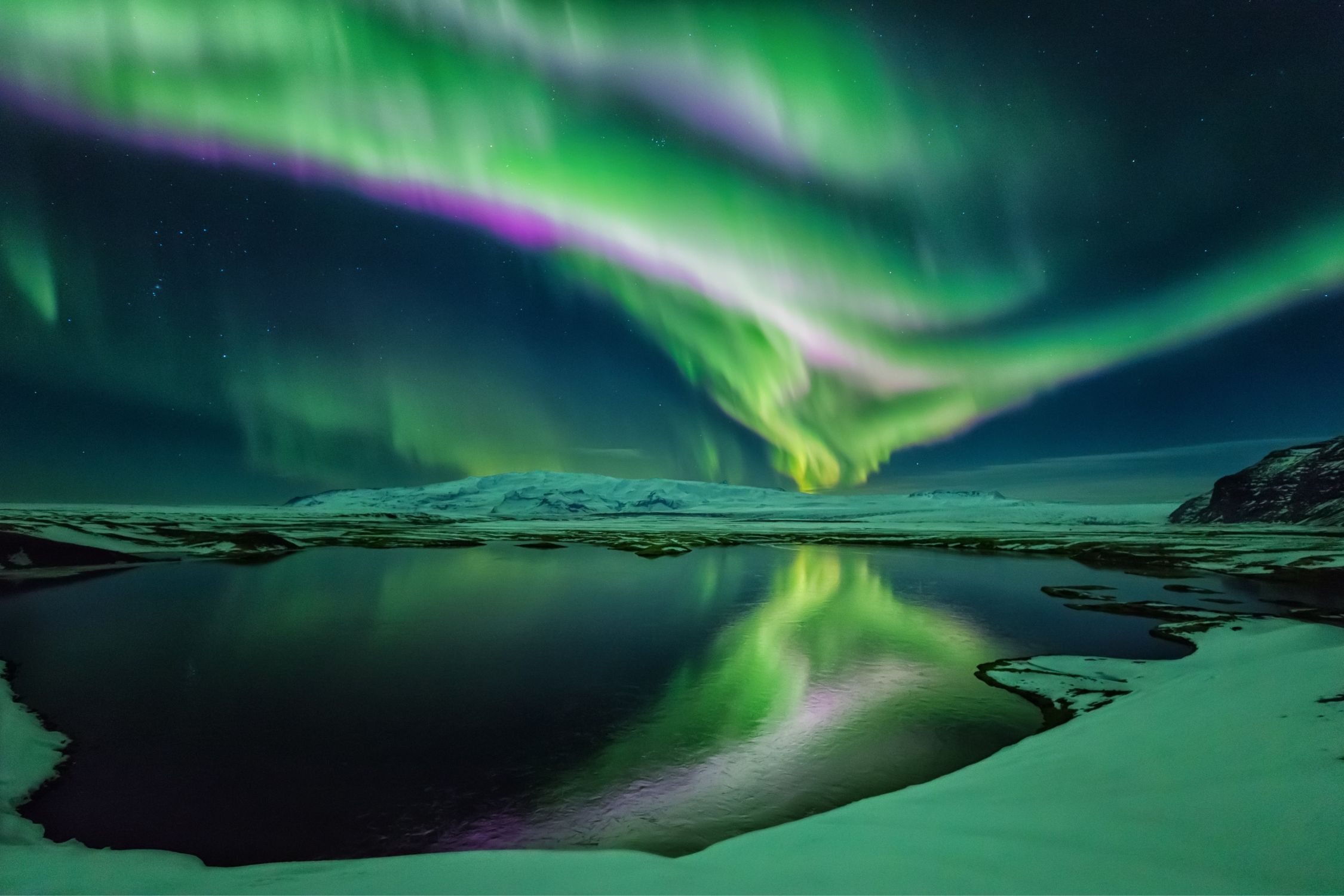
Due to its location below the Arctic Circle, Iceland is one of the best places in the world to see the Northern Lights. Your best chance of seeing them is between late September and March when the weather is clear, cool, and crisp. You have less daylight but a higher chance of spotting this phenomenon. The period around the equinoxes is often the most vibrant and beautiful show. However, the weather is less stable, and the days are shorter, so it’s less guaranteed than the peak winter months.
Remember, the further away from light pollution, the better your chance at a good show! It has to be a strong display to see the lights in Reykjavik! We suggest booking a campervan or a countryside lodge to see the Northern Lights. Several operators also offer cruises from the city, which allow you to get on the water and avoid light pollution. However, as the boats rock in the ocean, taking a long exposure photo of the lights is very difficult.
best time to visit Reykjavik
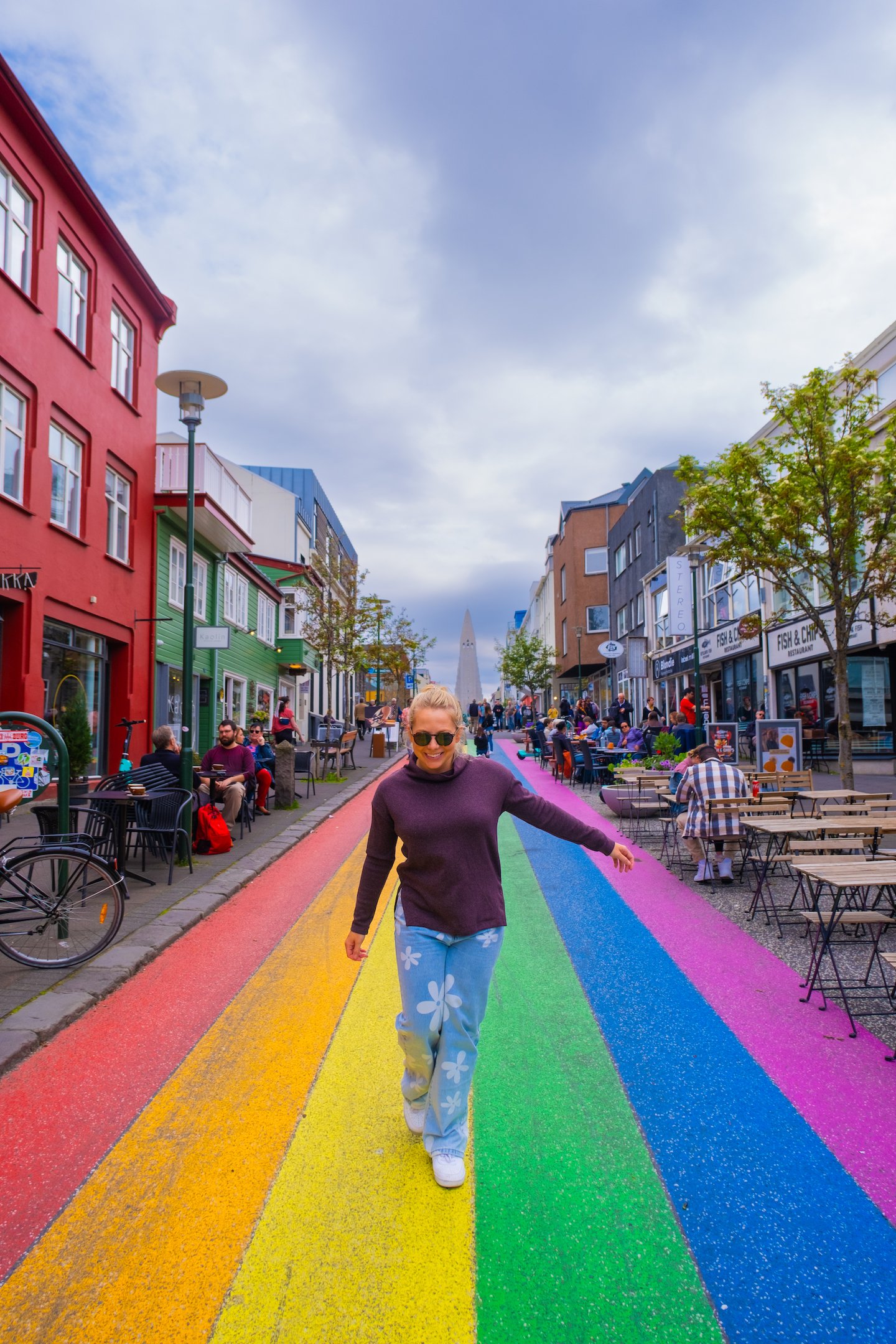
Reykjavik is a fabulous city to visit any time of year. There is always something to do, be it winter or summer. If you want to sit outside and enjoy a beer without freezing, visiting Reykjavik during the summer of June-August is best. September and October are still comfortable, but you will want a walking jacket. The photo above was taken in late June, and jeans and a long-sleeved top were necessary.
the best time for whale watching

Whale-watching season in Iceland is from April to October. The best time to see the whales is in the summer (June, July, and August). You can find tours that run out of Reykjavik every day in Iceland. Other popular places to go whale watching are Akureyri, Dalvik, Husavik, and the Vestmannaeyjar Islands. Make sure to bring a camera and a windbreaker jacket. It gets cold on the boats – even in the summer!
the Best Time to See Puffins
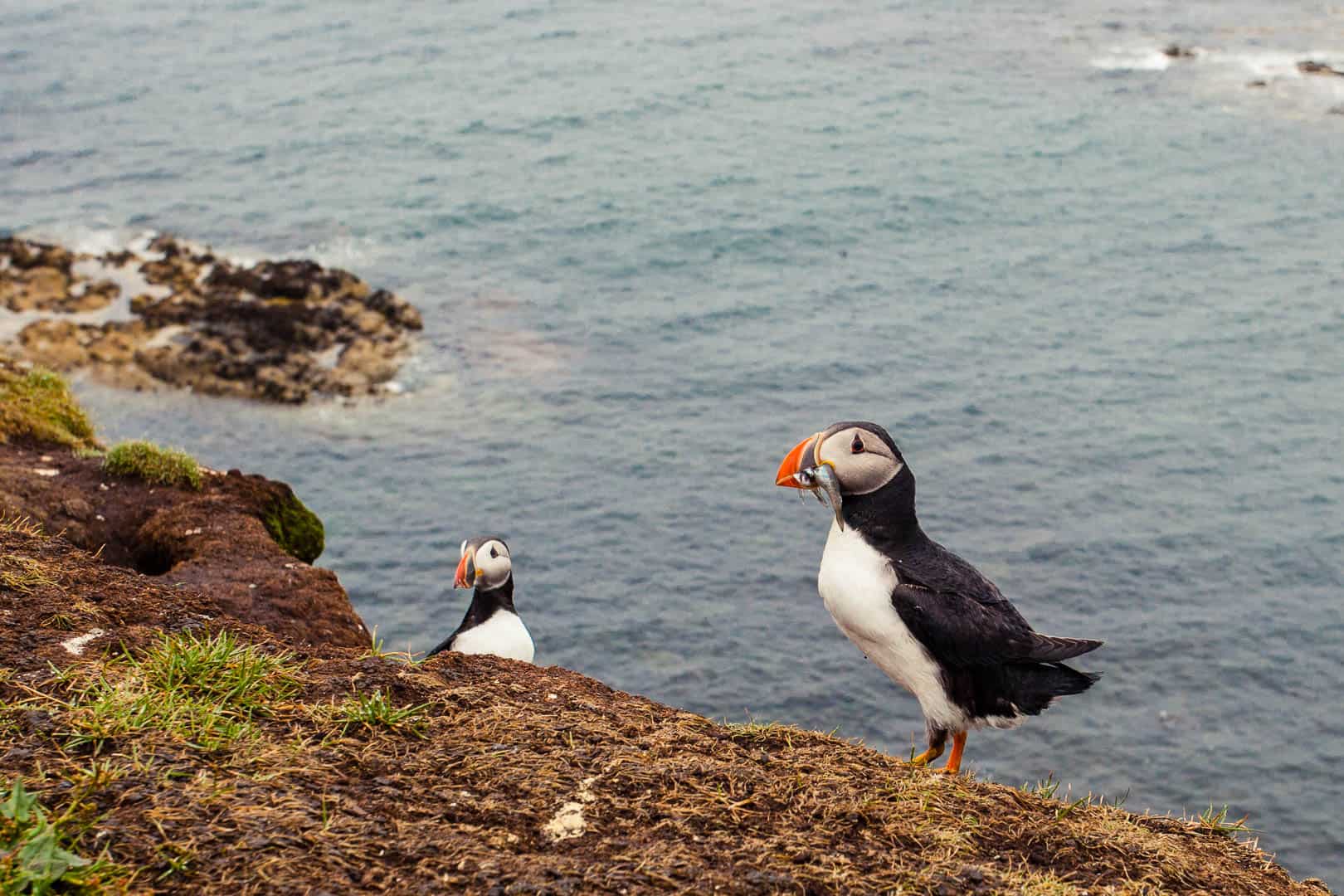
Puffin viewing season in Iceland is from late April to
The Best Time For A Deal

If you are trying to travel on a budget, the best time to go is the offseason. Mid-November to April will provide you with lower car rental prices, lower prices on guesthouses, and cheaper tours. However, keep in mind that many businesses will close during these months. If you’re camping around Iceland, you’ll have difficulty finding campsites open in the winter. However, you can still find good weather and reasonable prices during the shoulder season.
and had a much quieter experience before the crowds rolled in around 9 a.m.
Plan For Your Trip
- Protect Your Trip: We don’t travel without travel insurance, nor should you. You never know what can happen while traveling, so it’s best to be prepared. HeyMondo provides excellent short-term and long-term travel insurance plans.
- Find Cheap Flights: Sign up for Going (formerly Scotts Cheap Flights) to get notified when prices get low.
- Book a Rental Car: We use Discover Car to book all our rental cars! You can also read our top tips for renting a car abroad here.
- Travel Adapter: Make sure you find a good adapter to keep your personal electronics charged. Otherwise, you may be paying for a cheap one once you land. Purchase one here.
- Travel Backpack: We like the Nomatic Travel Backpack for our travels. Check the price here.
- Our Favorite Travel Shoes: Our answer to this question is always Allbirds! Check them out on their site!
- Get a Travel Credit Card: We travel worldwide for free because we have leveraged our spending into points. See how you can do the same with our favorite travel credit cards.


Amazing
Thank you for sharing
Wow!! Thank you for such an awesome post!